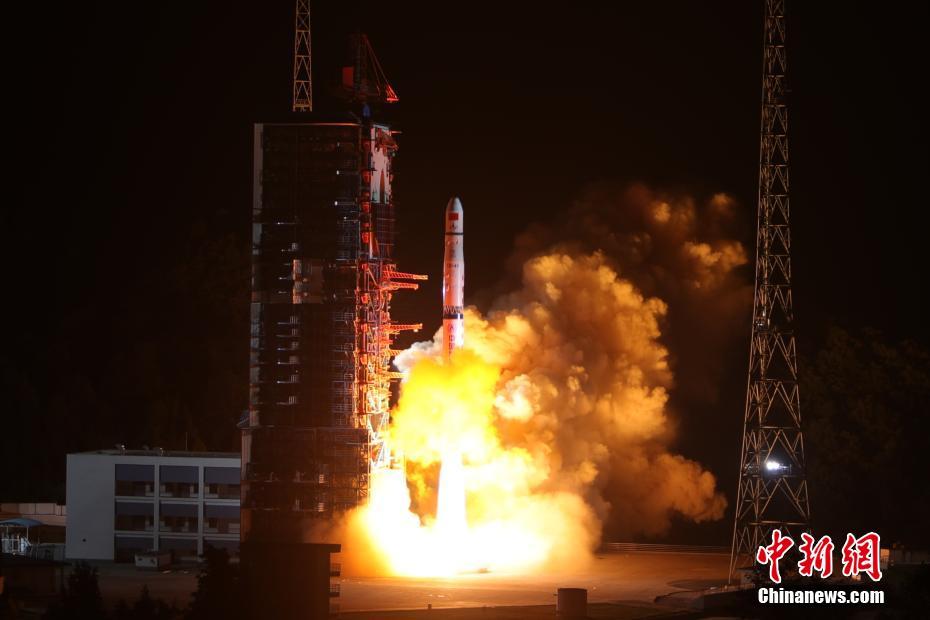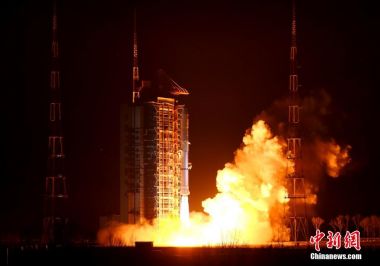China has successfully launched a lunar communications relay satellite designed to support an unprecedented mission to put a lander and rover on the far side of the Moon in late 2018, as well as carry out pioneering astronomy.
The Chang’e-4 relay satellite, accompanied by two microsatellites, lifted off atop a Long March 4C rocket from the Xichang Satellite Launch Centre at 21:28 UTC on Sunday (05:28 Beijing time, May 21).
The spacecraft was successfully inserted into a lunar transfer orbit and separated from the rocket’s upper stage, the China Aerospace Science and Technology Corporation (CASC) – the main contractor for the space programme – confirmed just under an hour after launch.
Named ‘Queqiao’ – referencing a ‘Magpie Bridge’ from a Chinese folklore of lovers crossing the Milky Way – the relay satellite is now on an 8-to-9 day journey to the second Earth-Moon Lagrange point (E-M L2) some 60-80,000 kilometres beyond the Moon and nearly half a million kilometres from Earth.
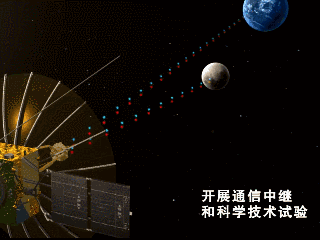
An animated demonstration of the role of the Queqiao Chang'e-4 lunar relay satellite.
The main aim of the mission is to provide a means of communications for setting down and operating a lunar lander and rover on the far side of the Moon, a feat that has never been attempted.
As the Moon is ‘tidally locked’, taking the same time to go around the Earth as it does to rotate once, the lunar far side never faces the Earth. The landing mission thus requires a communications relay satellite with simultaneous line-of-sight to both the lander and rover on the Moon and terrestrial ground stations.
The gravitationally stable E-M L2 will allow for a stable orbit from which the satellite can perform this task.
Long March-4C launches Queqiao (Chang'e-4 relay satellite/ 鹊桥)
Queqiao will make a lunar swing-by to send it towards its intended destination beyond the Moon and use its own propulsion to enter a halo orbit around the Lagrange point.
Once in place the 448 kg CAST100 satellite, developed by the China Academy of Space Technology (CAST), a spacecraft maker under CASC, will undergo testing of its 4.2m parabolic antenna and functions ahead of the landing mission which will take place in around six months.
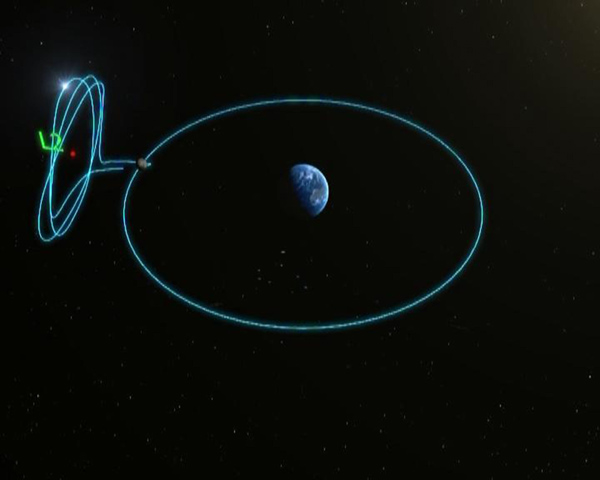
Image demonstrating a halo orbit around the second Earth-Moon Lagrange point, from which the Chang'e-4 communications relay satellite will operate.
The relay satellite marks China’s fifth lunar mission, following two orbiters, Chang'e-1 in 2007 and Chang’e-2 in 2010), the 2013 Chang'e-3 lander and rover, and a 2014 test lunar return mission.
In 2019 China will launch the Chang’e-5 mission to collect 2 kg of samples from the Moon and bring them to Earth.
Today’s launch was China’s 15th of the year, with the country aiming for a national record of around 40 in 2018.
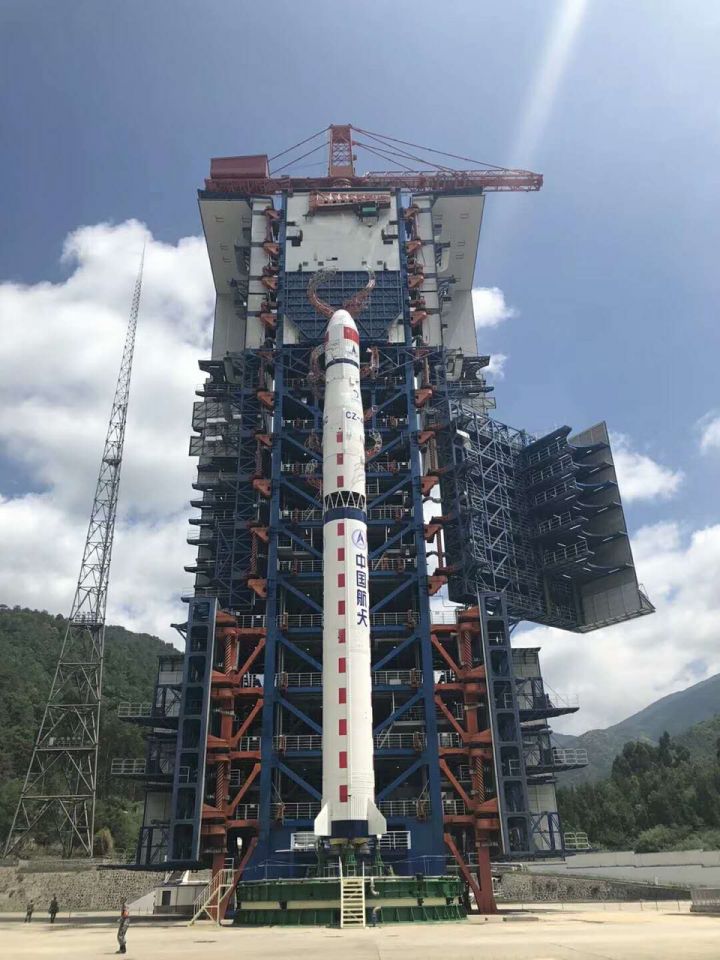
The Long March 4C rocket at the Xichang Satellite Launch Centre on May 20, 2018.
Pioneering astronomy
Following the landing mission, the relay satellite will deploy three 5-metre monopole antennas which will be used for very low frequency astronomy that is not possible on Earth due to the planet’s atmosphere.
The Netherlands-China Low-Frequency Explorer (NCLE), developed by Radboud University and others, will attempt to detect a low frequency signal from the ‘dark ages’ of the universe, a few hundred million years after the Big Bang and before the first stars begin to shine.
Other objectives, says Marc Klein Wolt of Radboud University and NCLE project leader, include surveying the solar system at these frequencies, and act as a pathfinder for future missions.
Asked if NCLE could also - despite not being a science objective for the team - contribute to the search for extraterrestrial intelligence (SETI), Klein Wolt says that, "In principle it could, as we are opening a new window on the universe, but I'm not expecting to find ET."
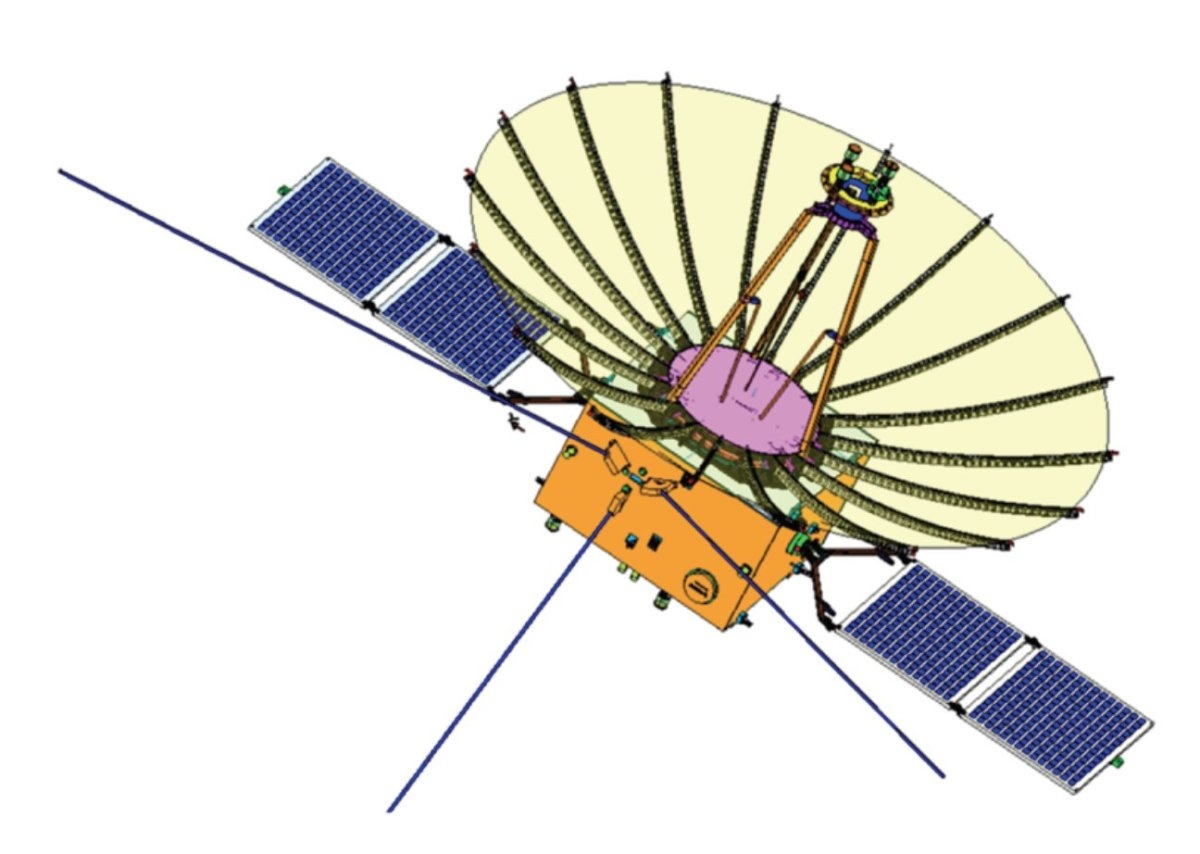
A diagram of the Queqiao Chang'e-4 relay satellite, with a parabolic antenna for communications, and three 5-metre monopole antennas for low frequency astronomy.
Two microsatellites, Longjiang-1 and -2 (River Dragon-1 and -2), were also aboard the launch and will enter highly elliptical lunar orbits to perform their astronomy tasks.
The 45-kg, 50x50x40-cm satellites developed by the Harbin Institute of Technology (HIT) in Heilongjiang Province will use 1-metre antennas to test low frequency radio astronomy and space-based interferometry.
Mainly a technical verification for future missions, the pair will also carry out amateur radio experiments, with one will also carrying a small optical camera developed by Saudi Arabia.
Testing on the Chang'e-4 DSLWP-A1 and DSLWP-A2 microsatellites in early 2018.
Landing mission in late 2018
Chang’e-4 was originally a backup for the Chang’e-3 mission that saw a lander and the Yutu (Jade Rabbit) rover touch down on Mare Imbrium in 2013.
As that mission was successful – despite a mechanical failure afflicting Yutu – the Chang’e-4 spacecraft have been repurposed for an ambitious lunar far side landing.
The target for the landing is expected to be within the Von Kármán impact crater within the South Pole-Aitken Basin, a scientifically intriguing area that could offer tremendous insights into the history and development of both the Moon and the solar system.
Cameras on Chang'e-3 returned astounding images from Mare Imbrium, and the same is hoped for Chang'e-4. Chang'e-3 made a number of discoveries with its instruments, including multiple distinct layers beneath the surface, suggesting the Moon has a more complex geological history than previously thought.

China's Yutu ("Jade Rabbit") rover on the Moon's Mare Imbrium, as pictured by the Chang'e-3 lunar lander, seen in the foreground.

The far side of the Moon and the distant Earth, imaged by the Chang'e-5T1 mission in 2014.

 En
En Dansk
Dansk
 Nederlands
Nederlands
 Eesti
Eesti
 Suomi
Suomi
 Français
Français
 Ελληνικά
Ελληνικά
 Íslenska
Íslenska
 Lietuvių
Lietuvių
 Bokmål
Bokmål
 Русский
Русский
 Svenska
Svenska
